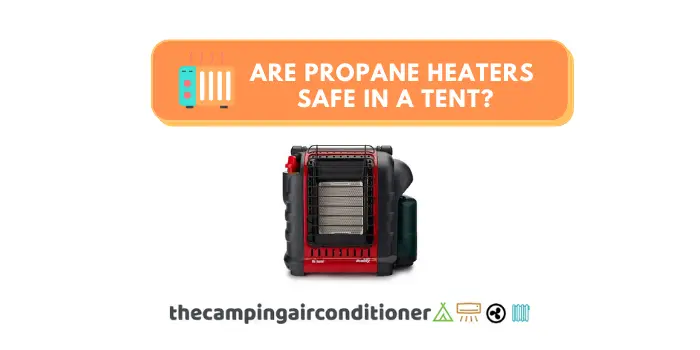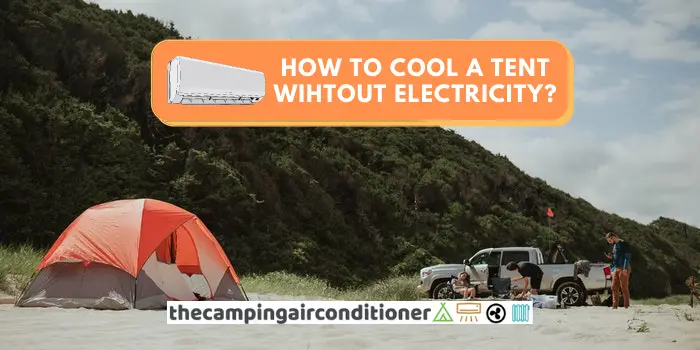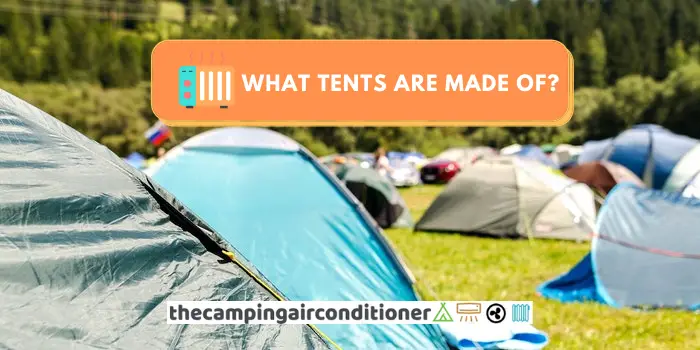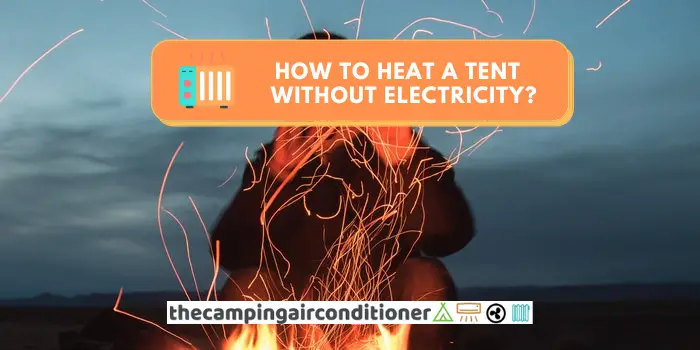Are you a winter camping fan? Or are you considering going camping to relieve stress and have a great time outdoors during winter? The freezing airflow might hinder you at first, but don’t worry – we have compiled special tips to make your winter camping trip bearable.
These are our 8 top tips to insulate your tent for winter camping:
- Pick an adequate insulation material
- Install the insulator on your tent correctly.
- Insulate your tent floor
- Use a 4-season tent
- Choose a smaller tent
- Pitch your shelter in the perfect spot – avoid wind exposure
- Bring a tent heater
- Use a suitable sleeping bag
The next sections will describe each tip in detail – let’s go through them.
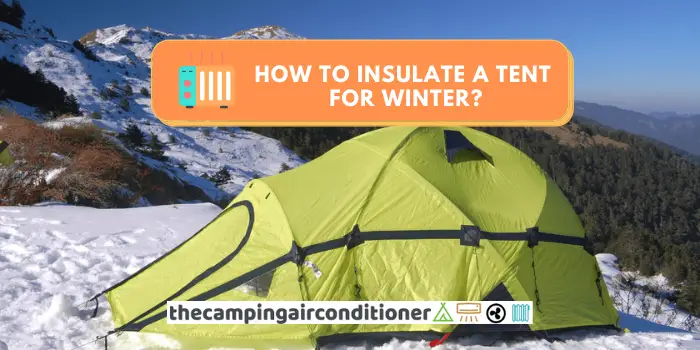
Tent insulation - basic principles
Basically, we want to insulate our tent to ensure that warm air is trapped inside our tent in winter. However, the same principle is applied during hot days, when we want our insulation system to keep the cold air inside.
But how do we do it?
The answer is simple: we need to create a thermal barrier to retain the heat inside the desired environment. Therefore to discover the top-notch insulation approaches, we need to focus on creating these barriers and what they are made of.
How to insulate a tent for winter camping - 8 useful tips
Tip 1 - Pick the right insulation material
There are multiple options for insulation materials, such as cellulose, mineral wool, natural fibres, polyurethane, polystyrene, and many others.
However, if you are camping, you are probably after something lightweight, foldable and easy to carry. We recommend using reflective foam, thermal blankets, and reflective foil in this sense.
They are easy to handle, pack for your trip and find available in multiple stores.
Tip 2 - Properly install it on your tent
Now that you know the best materials to use for your tent insulation, it is time to learn to use them.
Overall, we recommend insulating the tent’s inner par with reflective foam since they tend to offer better insulation features.
This material is very light and therefore easy to be fixed. We recommend placing it between the tent fabric and poles and using tapes to fix it. You can also use pegs small pegs.
As for the exterior, you can throw a thermal blanket over it. To avoid letting it blow away, you can place a heavier cover on top of it. Check the video below with a practical guide.
By doing this, you will have a double-insulation layer, which might significantly increase heat retention.
Tip 3 - Insulate your tent floor
You might not be aware, but the soil constantly exchanges heat with the surface. Insulating your tent floor is a crucial measure to ensure you keep your tent warm during winter.
How do you do it?
Even though there are multiple ways to do it, we link the following the foam tiles approach since it is a convenient solution.
First, lay the reflective foam on top of the tent floor and place the foam tiles above it. See the sketch below with further details.
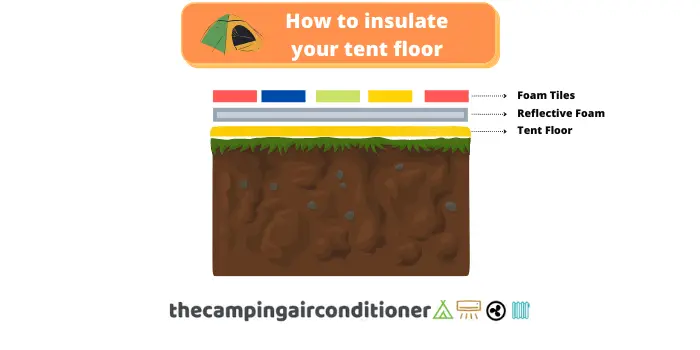
Alternatively, you can also use yoga mats. They are flexible and easy to carry and place.
Tip 4 - Chose the right tent
There are multiple tent options available these days: 1, 2, 3, 4, and 5-season tents. Each of them can be made with different fabrics to suit specific needs.
Overall, the higher the grade, the more robust the tent will be for winter camping. For example, 5-season tents are designed to handle icy weather and are suitable for experienced campers (you probably don’t need a 5-season tent).
Even though it is named 4-season tents, it is not fabricated to be used all year round. They are specifically developed for the mild cold season, aiming for early spring and late fall weather. Usually, these equipment have a lower profile to withstand strong winds and snowfall.
The 3-season tent can be used in different seasons, and there are various models available in the market these days. They tend to be lighter and provide more breathability to support warm and cold days.
The 1 and 2-season tents are much simpler and more suitable for summer days.
Insulator for tents that we recommend
Why we recommend?
It provides excellent temperature regulation and insulation features, with an extremely easy set-up. Further, it can be used on boats, camper vans, and RVs. Overall, it is a top-notch insulated camping tent.
Why we recommend?
Affordable and efficient 3-season tent with good wind and waterproof features.
Tip 5 - Bring smaller tents
The rationale behind this is logical (from the physics): the bigger the tent, the more heat is required to warm it up. Therefore, choose the smallest tent that can provide you with enough space for your trip.
Tip 6 - Pitch your tent areas that are not exposed to wind flow
Before setting your tent up, check the following tips:
- Avoid pitching your tent in open fields. The wind circulation might increase the cold feeling (wind chill factor).
- If camping in the snow, you can create a windbreak. If there is no snow, you can use a tent tarp as a wind protector.
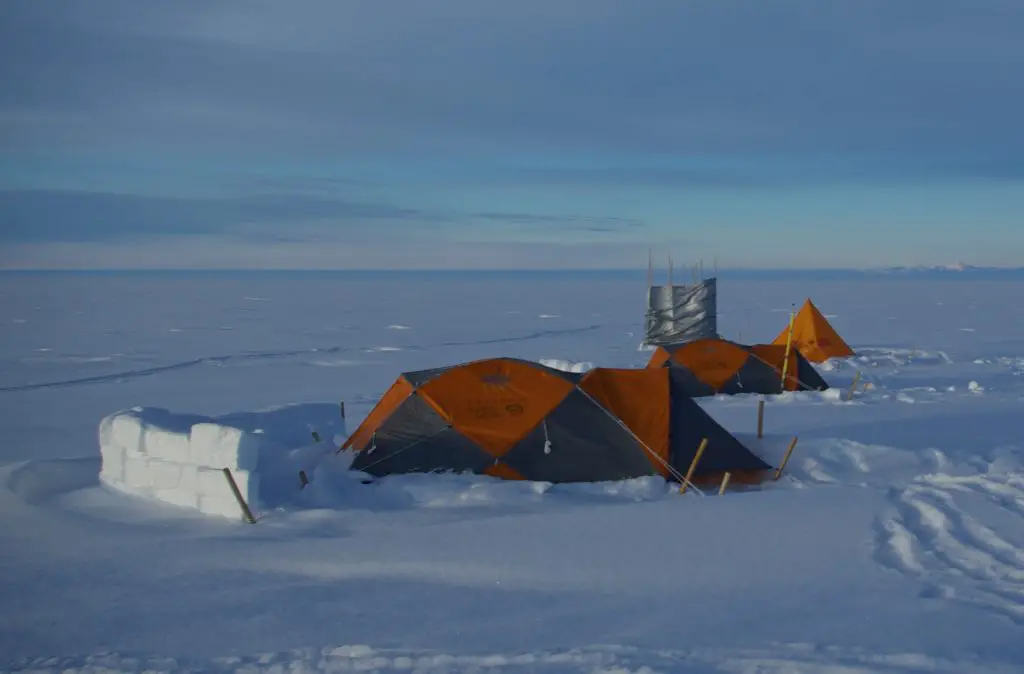
Tip 7 - Use a tent heater
Even though tent heater is not a insulation measure, it definitely can help you in winter days.
One of the tricks that we recommend here is after insulating the tent (following all the previous tips), turn your heater on inside it and leave it working for 1 hour before sleeping. When you go to bed, the environment inside the tent will be warm and cozy.
Note: we do not recommend you sleeping with the heater turned on for safety reasons. If you learn more about it, read our article on safety of propane heaters inside a tent.
Tip 8 - Use a suitable sleeping bag
Similarly to tents, sleeping bags also have different ratings, which are directly related to the temperature levels they can handle. They are usually classified according to the EN13537 (European Norm).

Before buying your sleeping bag, check the average temperature of your campsite and look for a sleeping accordingly. Do not get an extremely warm option if you are camping in mild winter (otherwise, you will probably be sweating all night).
FAQ
What is the best for winter camping - a 3-season or a 4-season tent?
It depends on where are you camping. The 4-season tent are designed for heavier winter condition, whereas the 3-season option retains some flexibility for summer camping.
Apart from tent insulation, how can I keep my tent warm during winter camping?
We have prepared a detailed guide on this and invite you to read carefully – how to heat a tent without electricity.
Are there the best tent colors for winter camping?
Overall, darker colors tend to retain more heat and would be more appropriate for winter camping. However, there are other variables that you should consider before choosing your tent tone variation – for more information, read this article.
Conclusion
Camping during winter might be a great experience. To make the most of it, consider insulating your tent to have a warm and cozy night.
Apart from the tips above, you should also consider wearing winter camping clothes, such as thermal underwear and balaclavas.
We hope this article was helpful and should you have any doubts or suggestions, please do not hesitate to contact us!









